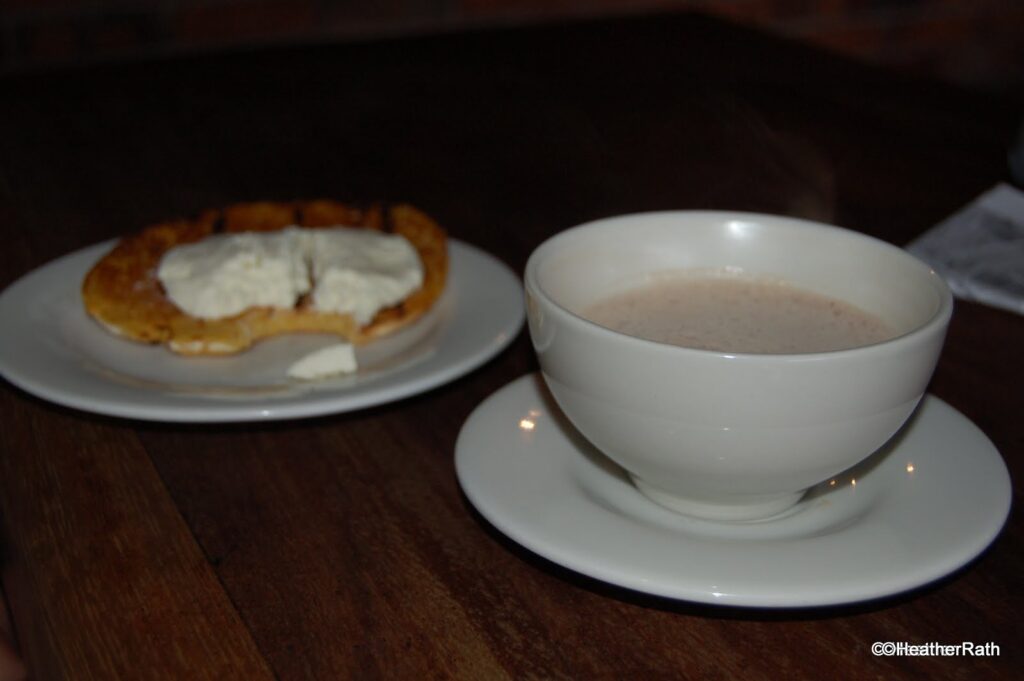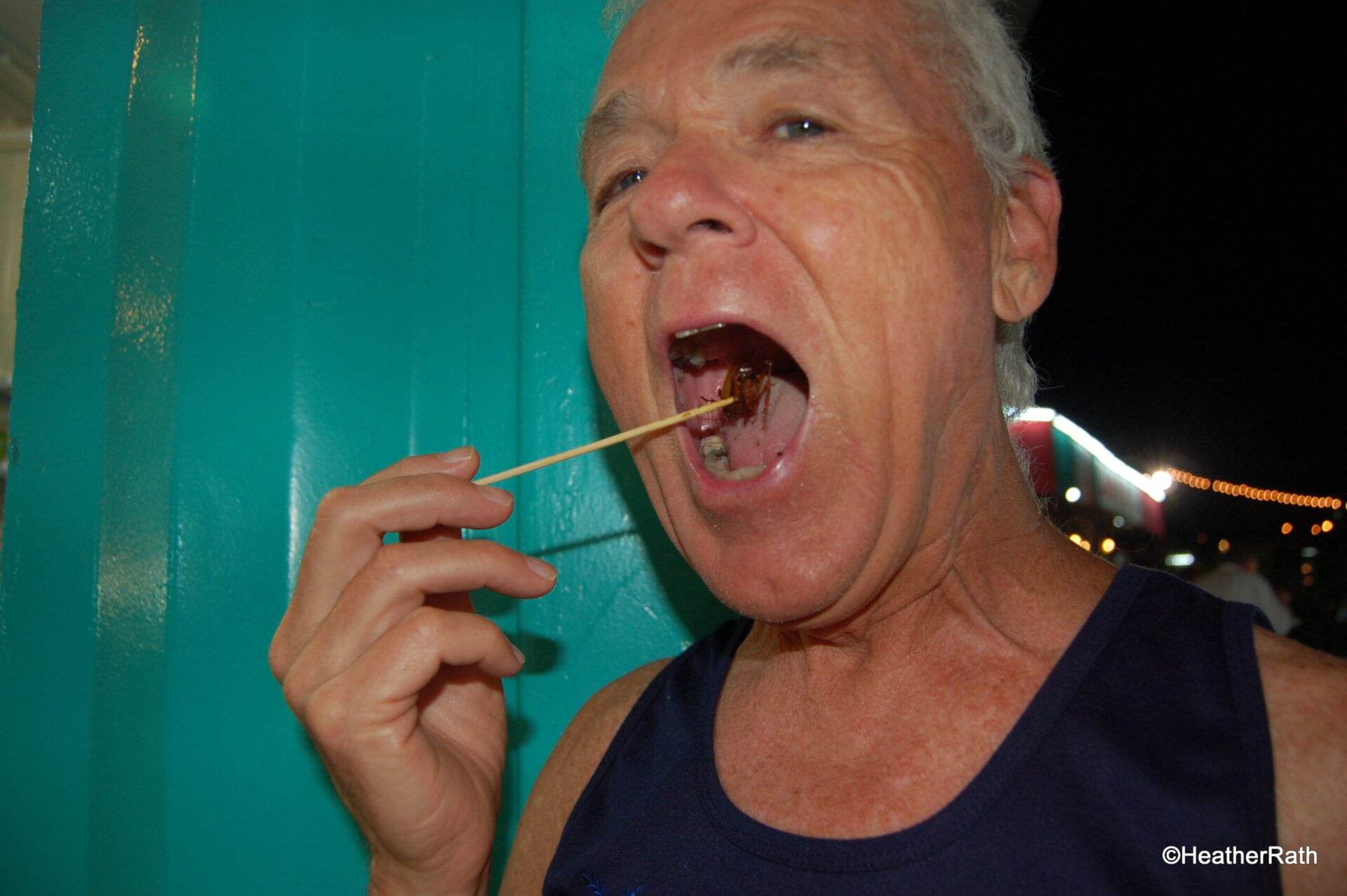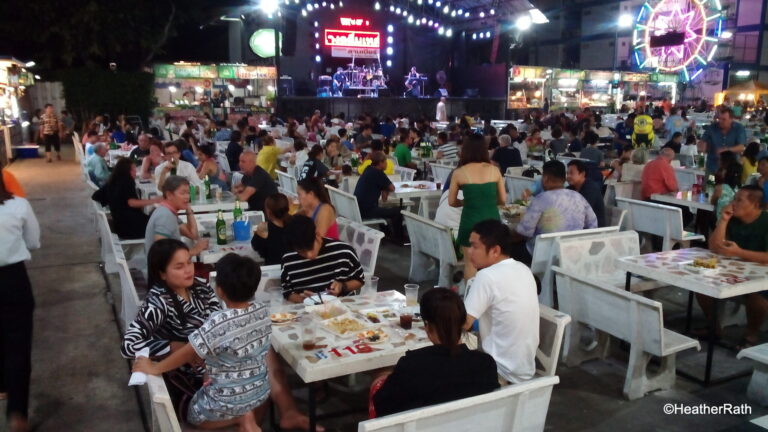Taste the World
World Foods
Time to test your taste buds on foods from around the world. Like beachworms, blue-skin chicken, scorpions/insects, guinea pig, yak burgers, rabbit, chaya, nopales, noni, arepas…
Shock Foods
Hmmm. Shock food probably belongs to the carnivorous family. Those not familiar to our North American palate. Let’s start with China.
Beach(sand)worms
In Beihai, southern China, thick, juicy beachworms are a common street food providing added protein. Norm ate them when he visited there many years ago. Worms are between 6 to 10 inches long and are prepared by removing the intestines, esophagus and muscles before cooking/frying/adding to stews or stirfries. He declared them edible. Especially the crunchy fried ones!
Blue-skin chicken
In Beijing, the capital of China, our hosts invited us to try a local delicacy: blue-skin chicken, at a ‘live’ restaurant. ‘Live’ means the diner chooses his meal from various cages of live edibles like chicken, snake, rabbit, worms…
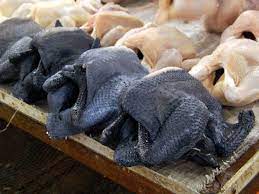
Once chosen, the chicken is butchered; nothing goes to waste. Blood and bones are combined in a delicious soup while the meat presentation is artistic. So is the taste!
The meat is also used in Chinese medicine since it contains twice as much carnitine as other chicken meat. Carnitine is reputed to have anti-aging properties.
Scorpions/Insects
At the night market in Phuket, Thailand, Norm sampled fried insects, including scorpions. Insects are now considered a viable protein substitute to meat in many areas of the world. The largest crowds gather around the fried insect stall. So popular is this stand there is a sign in English stating photos can only be taken if you purchase the crunchy little morsels. Crickets are caught in the wild while grasshoppers and silkworms are raised on insect farms in northeast Thailand.

Guinea Pig
Norm invites a squirming me to sample roasted guinea pig (el cuy—pronounced koo-ie) in a specialized restaurant in Cuenca, Ecuador. A local insists we cannot leave Cuenca until we enjoy their favourite meal passed down from the Inca.
Guinea pig meat is apparently healthy: high in protein, low in cholesterol and easy to digest. Still, looking on your plate at the spit- roasted creature with bared fangs and paws sticking straight up in the air is a bit disconcerting.
But I did sample the crispy ears. They tasted a bit like seasoned potato chips.
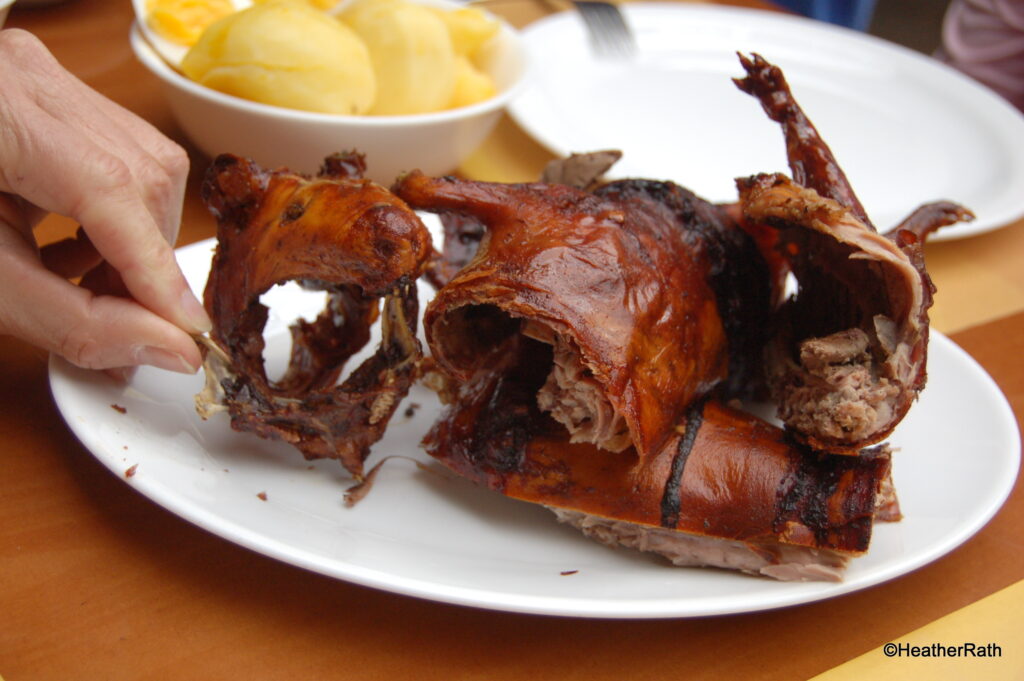
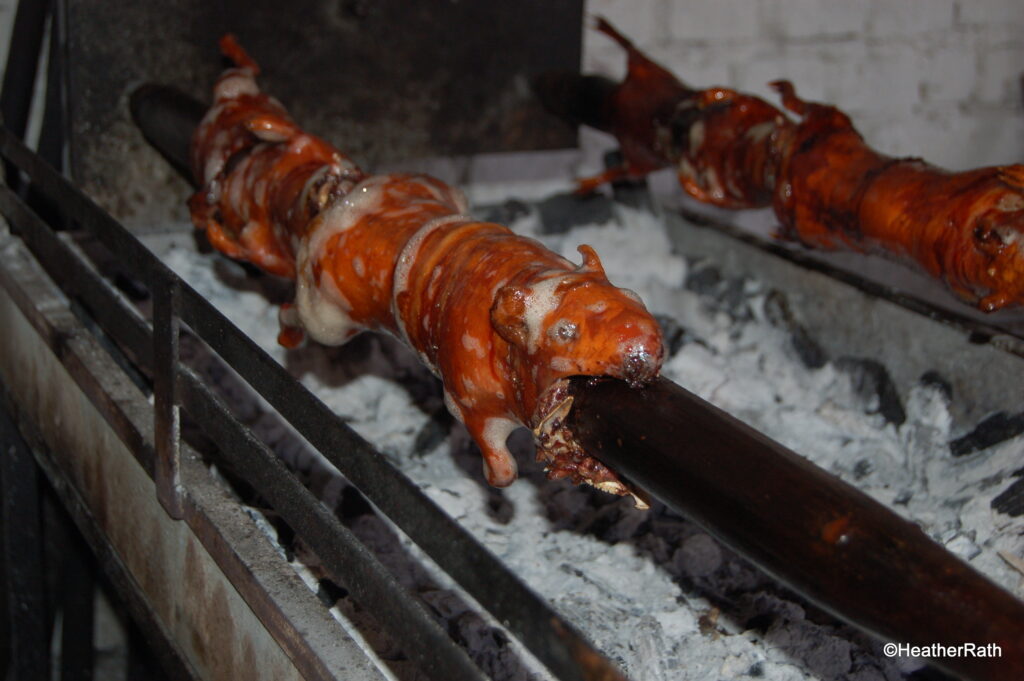
Yak Burgers
In Lhasa, Tibet, thin air in the high altitude left us breathless and tired until we sucked in oxygen through a tube from oxygen pillows at night in our hotel room. During the day, we chowed down on yakburgers. Only later did we learn this healthy deep red meat, with a delicate beef-like flavour, is higher in protein and Omega 3 than bison and most fish. The longevity of the Himalayan people is attributed to their yak rich diet.
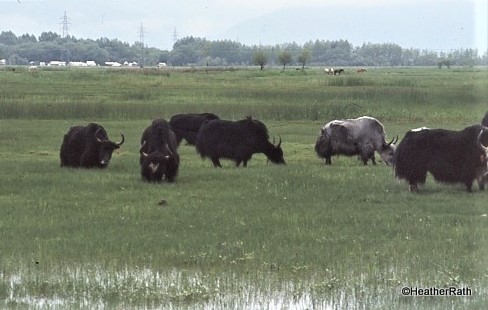
Rabbit
Rabbit, aka fenek, is one of Malta’s main national dishes. And yes, Norm sampled the meat. His report: rabbit meat is delicious. Like any other meat, it can be prepared in many ways.
And for the health aficionado, rabbit is an ideal meat. It is protein-rich meat and considered very nutritious due to its low content in fat, cholesterol and sodium.
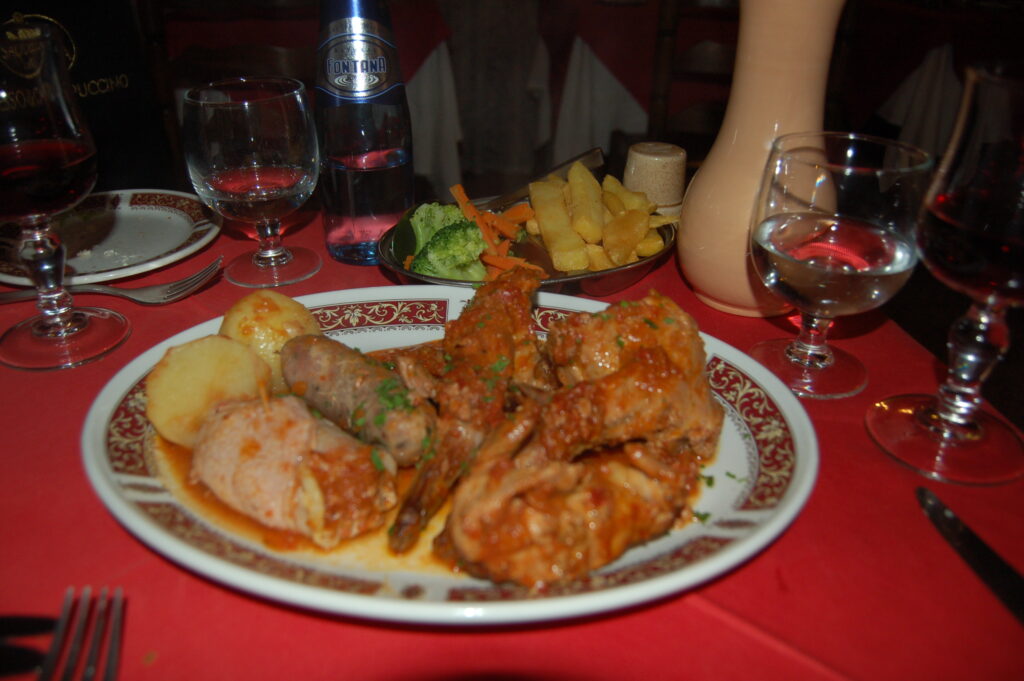
Chaya
And now for the vegetarian.
“Watch those prickly spines…and boil the leaves for at least 5 minutes before eating…”
We’re talking about the Maya chaya, a maple-leaf shaped green known as tree spinach in México’s Yucatán Peninsula: a ‘miracle’ medicinal plant richer in iron than spinach and an excellent source of potassium and calcium. But beware: its leaves contain toxic hydrocyanic glycosides so boiling before consuming is a must.
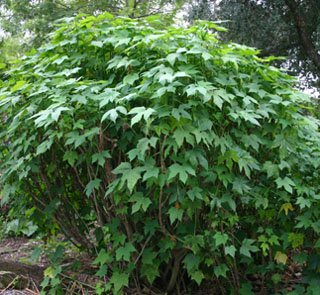
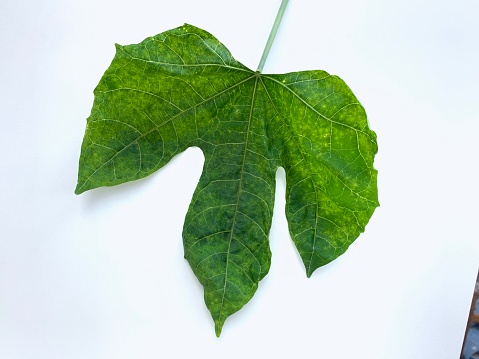
Nopales
Ever eat cactus pads? Nopales (from the Nahuatl language), commonly known as prickly pear plant in Canada, reportedly prevent cancer, improve skin health, protect the heart, improve digestion, boost the immune system…you get the idea. Each Spring it’s easy to spot the prickly pear growing in the wilds of Central and South America. Look for splashes of brilliantly coloured red and yellow blossoms that dot an arid field. There’s something neat about saying you’re eating cactus. Of course, we don’t eat the spines. Of course, we scrape them off!
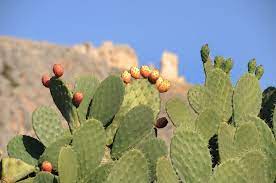
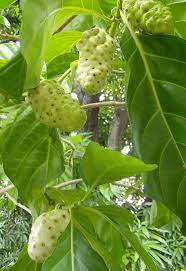
Noni
Meanwhile, in Playas, a coastal town in Ecuador, we heard about nuns who sold Noni wine. Noni is touted as a cure-all: like other superfood discoveries, it helps prevent cancer, diabetes and liver disease; is a powerful anti-oxidant; boosts the immune system and so on.
Always interested in improving our health, we had to try it. Buying Noni wine on the Sabbath from the shy wine-making Sisters in a coastal Ecuadorian convent is a memorable experience.
Noni is also known as cheese fruit or even vomit fruit because of its pungent odour when ripening. The noni tree is in the coffee family; its fruit is used in juices. Noni has been promoted as a cure for a number of diseases. But there is no evidence to support these claims.
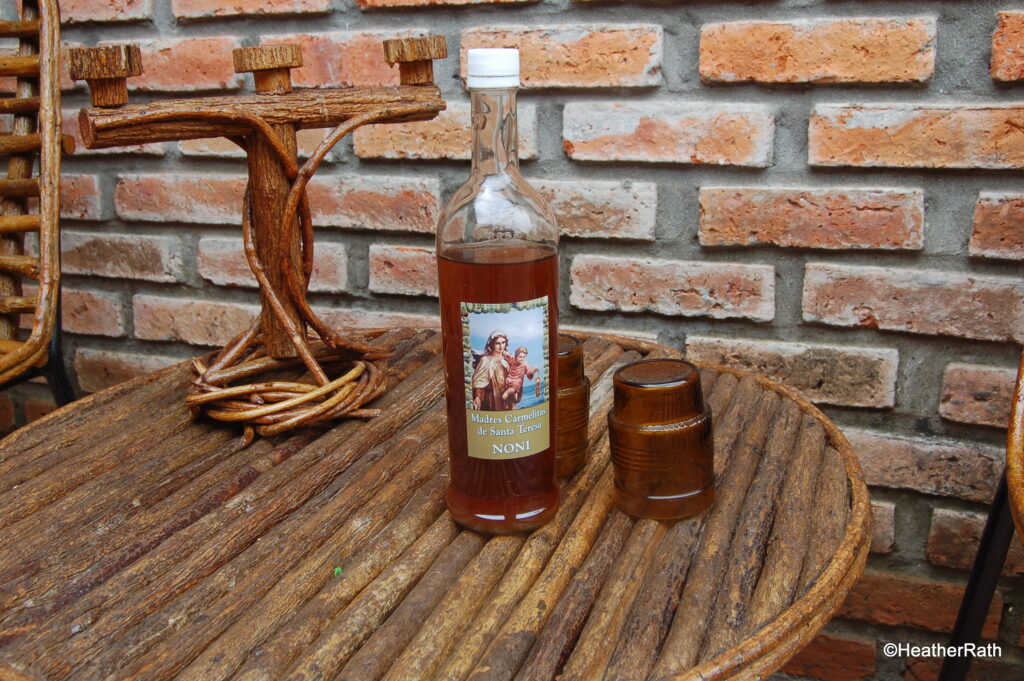
Arepas
Arepas are a common street food popularized in Central and South America. In Colombia, the most popular arepas are filled with cheese (arepas con queso), or with eggs and meat (arepas con huevo).
Prepared this way, an arepa is a good option for a quick meal-on-the-go any time of the day.
The arepa de huevo is popular on the streets of Cartagena and Barranquilla and along the coast. Always choose a food stand with customer line-ups. Then you know the arepas are fresh.
You can also eat a type of arepa that is larger and flat. This corn-based bread accompanies breakfast, lunch, or dinner, especially in farming areas.
